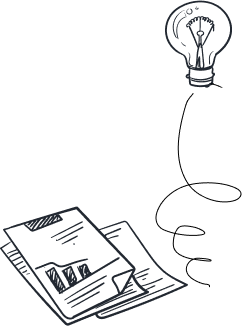Your phone is a relentless source of interruption, a constant stream of notifications, updates, and demands for your attention. The "mindless scroll" has become the default way to fill every spare moment, leaving you feeling anxious, drained, and disconnected from your own life. This is the signature symptom of modern digital overload. A "digital detox" is not an extreme, anti-technology statement; it is a "necessary health intervention," like a cleanse for a cluttered mind. This article is your practical, step-by-step guide to unplugging, resetting your brain's reward system, and creating a new, intentional relationship with your screens.
Key Points
- A digital detox is a conscious period of time away from technology (especially social media, gaming, and non-essential apps) designed to reset your brain's reward system and reduce the symptoms of "behavioral addiction."
- The need for a detox is driven by the intentionally addictive design of modern apps, which use dopamine loops and variable rewards to keep users hooked, a concept explored in Technology and Addiction.
- A successful detox requires a plan: define your rules (what is off-limits), set a duration (e.g., 48 hours), and prepare your environment by deleting apps and informing key contacts.
- The key to navigating the initial "withdrawal" phase, which often includes boredom and anxiety, is to "replace" screen time with fulfilling, pre-planned offline activities like hobbies, exercise, or in-person social connection.
- The ultimate goal is not permanent abstinence but "sustainable balance." The detox is a powerful reset that allows you to reintroduce technology on your own terms, using strategies like turning off notifications and setting firm time limits.
Introduction: The Cure for the Common Scroll
There is a quiet epidemic sweeping the globe, an affliction that does not cause a fever or a cough, but a constant, low-grade hum of anxiety. Its primary symptom is a reflexive, almost unconscious reach for the phone in every spare moment: in the elevator, in line for coffee, even during a conversation with a loved one. The "mindless scroll" has become the default state of modern existence. We are more connected than ever, yet we often feel more disconnected, from ourselves and from the world right in front of us. This is the predictable outcome of a digital environment designed to capture and hold our attention at all costs.
A "digital detox" is the antidote. It is not an anti-technology crusade or a permanent retreat from the digital world. It is a "necessary health intervention," a conscious and deliberate pause designed to allow your overstimulated brain to reset. It is an opportunity to break the cycle of craving and compulsion, to quiet the external noise so you can hear your own thoughts again. This article, by psychologist Dr. Anya Sharma, is your practical, step-by-step guide to planning and executing a successful digital detox. We will explore how to prepare, what to expect, and, most importantly, how to use the experience to build a healthier, more intentional relationship with your screens for the long term. All information is current as of Saturday, September 20, 2025 at 6:16 PM GMT from Kumasi, Ashanti Region, Ghana.
Why We Are So Hooked: A Brief Refresher
To understand why a detox is so necessary, we must remember that our struggle with screen time is not a personal failing; it is a "design success." As we explored in depth in our articles on The Impact of Social Media on Mental Health and Addiction and Technology and Addiction, these platforms are engineered to be addictive.
They expertly hijack the brain's "dopamine reward system," the same neurochemical pathway involved in substance use. Features like infinite scroll, autoplay, and the unpredictable nature of notifications create a "variable reward schedule," the same addictive principle that powers slot machines. Your brain gets a small hit of dopamine with every new like, message, or interesting video, creating a powerful compulsion loop that keeps you coming back for more. Over time, your brain becomes desensitized, requiring more and more stimulation to achieve the same feeling of satisfaction. A digital detox works by starving this overstimulated pathway, allowing it to reset to a healthier baseline.
Signs You Might Need a Digital Detox
How do you know if your screen use has crossed the line from a useful tool to an unhealthy dependency? Consider these common signs:
- You feel anxious, irritable, or even panicked when you cannot find your phone or when the Wi-Fi is down.
- You find yourself scrolling through feeds for long periods without any specific goal, only to "wake up" and wonder where the time went.
- You check your phone first thing in the morning and last thing at night, often disrupting your sleep.
- You experience "phantom vibrations," mistakenly thinking your phone is buzzing in your pocket.
- Your in-person relationships are suffering because you are often distracted by your phone during conversations (a phenomenon known as "phubbing").
- You have tried to cut back on your screen time but have been unable to do so.
If several of these resonate with you, it is a strong indication that a deliberate break could be incredibly beneficial.
Step 1: Planning Your Detox - A Blueprint for Success
Going into a digital detox without a plan is like trying to navigate a forest without a map. A little preparation can make the difference between a frustrating experience and a transformative one.
Define Your "Why"
Start by getting clear on your motivation. What do you hope to gain from this experience? Write it down. Your "why" will be your anchor when the urge to scroll becomes strong. Examples could be:
- "I want to be more present with my family."
- "I want to reclaim my focus so I can finish my creative project."
- "I want to improve my sleep and reduce my daily anxiety."
Choose Your Level and Duration
A detox is not one-size-fits-all. Choose a level of intensity that feels challenging but achievable.
- The Mini-Detox (24 Hours): A great starting point. Pick a day, like a Saturday, and commit to a full 24 hours with no social media, gaming, or non-essential apps.
- The Weekend Reset (48-72 Hours): This allows for a deeper reset. A full weekend from Friday evening to Monday morning can significantly reduce feelings of mental clutter.
- The Deep Cleanse (7 Days): A week-long detox can lead to profound insights and a major shift in your habits. This often requires more planning, especially if your work involves screens.
Set Your Rules of Engagement
Be crystal clear about what is and is not allowed. This is not about cutting off all technology, but "non-essential" technology.
- What Is Off-Limits? Be specific. For most people, this includes all social media apps (Instagram, TikTok, Facebook, X), news apps, online shopping apps, and games.
- What Are the Exceptions? It is okay to set practical exceptions. You might allow phone calls and texts with specific people (like family), the use of GPS for navigation, or listening to downloaded music or podcasts. The key is to avoid anything with a "feed" designed to capture your attention.
Prepare Your Digital and Physical Environment
- Delete the Apps: The single most effective step. Temporarily delete the off-limits apps from your phone. The extra friction of having to go to a web browser and log in is often enough to deter a mindless check.
- Inform Your People: Let close friends and family know that you will be less available for a few days. This prevents them from worrying and reduces your own anxiety about missing something important. You can even set up an auto-responder on your email or messaging apps.
- Plan Your Offline Time: This is the most crucial part of the plan. You must "replace" the time you would have spent scrolling. Make a list of activities you want to do. Buy a physical book, get out your art supplies, plan a hike, or schedule a coffee date with a friend.
Step 2: The Detox Experience - Navigating the Discomfort
The first 24 hours of a detox can be surprisingly challenging. Your brain, accustomed to constant stimulation, will protest the sudden quiet.
Embrace the Boredom
You will likely feel a powerful sense of boredom. This is a "good" sign. It is the feeling of your brain recalibrating. Boredom is the precursor to creativity. Instead of seeing it as a void to be filled with a screen, see it as an "open space." This is where new ideas, self-reflection, and a desire to engage with the physical world are born. As you may have explored in Finding Joy in Solitude, this space can be incredibly rich.
Surf the Urge
You will feel the "urge" to check your phone. This is a physical craving. The principles of mindfulness are incredibly helpful here. Instead of fighting the urge, "observe" it. Notice where you feel it in your body. Acknowledge its presence without acting on it. Like a wave, the urge will build, crest, and then recede. Each time you "surf the urge" without giving in, you weaken the neural pathway that drives the compulsive behavior.
Engage Your Senses
One of the best ways to stay grounded in the offline world is to actively engage your senses. Go for a walk without headphones and pay attention to the sounds of the birds and the feeling of the wind. Cook a meal and focus on the smells and textures of the ingredients. Our screens flatten our sensory experience; a detox is a chance to re-engage with the rich, three-dimensional world.
Step 3: The Re-Entry - Creating Your New Digital Diet
A detox is not a one-time fix. Its real value lies in the clarity it gives you to create a "sustainable, long-term strategy" for managing technology. The goal is to reintroduce screens on your own terms.
Reflect on Your Experience
Before you reinstall any apps, take some time to journal about your detox. Consider the prompts from our guide on Journaling for Self-Discovery. What did you notice? When did you feel the most anxious? What brought you the most joy? This reflection will inform the rules you set for yourself moving forward.
Curate Your Digital World with Intention
- The Great Unfollow: As you reinstall social media apps, be ruthless. Unfollow any account that makes you feel inadequate, anxious, or angry. Your feed is your digital home; you get to decide who and what you let inside.
- Turn Off (Almost) All Notifications: This is a game-changer. Notifications are the primary tool apps use to pull you back in. Turn off all notifications except for those from real people, like phone calls and text messages. You should choose when you check an app; the app should not choose for you.
- Create a "Digital Sunset": Commit to putting all screens away at least one hour before you go to bed. The blue light from screens disrupts melatonin production and harms your sleep. Read a physical book instead.
- Schedule Your Screen Time: Instead of checking your phone sporadically throughout the day, try setting aside specific, limited blocks of time for it. For example, you might allow yourself 15 minutes of social media after lunch and 15 minutes in the evening.
- Make Your Phone Less Appealing: A simple but effective trick is to turn your phone's display to grayscale. Without the bright, stimulating colors, the apps become significantly less attractive to your brain.
Comparison: The Overstimulated Life vs. The Balanced Digital Life
| Aspect | The Overstimulated Life | The Balanced Digital Life |
|---|---|---|
| Morning Routine | Checks phone, scrolls through news and social media immediately upon waking. | Wakes up without a screen, engages in a mindful activity like stretching or journaling first. |
| Notifications | All notifications are on, creating a state of constant, reactive interruption. | Most notifications are off, allowing for proactive, focused blocks of attention. |
| Social Situations | Frequently checks phone during meals or conversations with others ("phubbing"). | Puts phone away and gives full presence to the people they are with. |
| Boredom & Downtime | Any moment of boredom is immediately filled by picking up the phone. | Allows for moments of boredom, seeing them as opportunities for thought, creativity, or observation. |
| Evening Routine | Scrolls in bed until falling asleep, often with the phone next to the bed. | Has a "digital sunset," putting screens away an hour before bed to allow the mind to wind down. |
Conclusion: Reclaiming Your Most Valuable Asset
In the modern world, your attention is your most valuable asset, and there is a multi-trillion-dollar economy built around mining it. A digital detox is the most powerful way to reclaim ownership of that asset. It is a declaration that you will be the one to decide what is important, where your focus goes, and how you spend your finite time on this earth.
By periodically unplugging, you are not running away from the world; you are running "towards" yourself. You are creating the space to think, to feel, to connect, and to live a life that is less reactive and more intentional. You are remembering that the most beautiful, meaningful moments of our lives rarely happen on a screen.








